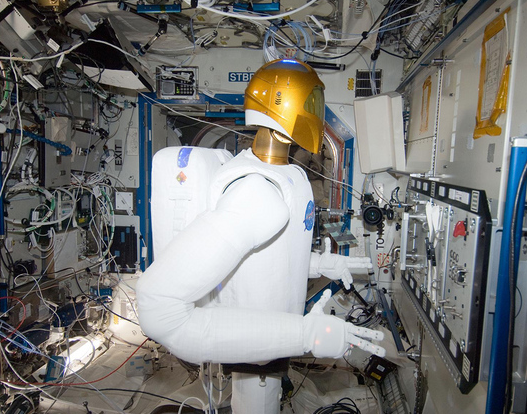Hundreds of people from at least 15 different countries have journeyed to the International Space Station (ISS), but the habitable artificial satellite has only hosted human astronauts, until the invention of Robonaut 2.
R2, as the robot is called, was the first dexterous humanoid robot to travel among the stars. In collaboration with General Motors, researchers at NASA's Johnson Space Center (JSC) designed R2 with dexterous hands, compliant limbs, integrated sensors, redundant safety systems, machine vision cameras, and much more so that it could help out astronauts aboard the ISS.
The idea behind the first Robonaut, which NASA began working on in 1997, was to assist astronauts with an extra pair of hands, perform jobs that were too risky for crew members, and complete mundane tasks aboard the ISS. The result was R1, the human-like robot capable of performing maintenance tasks, and more impressively, it could be placed on a set of wheels to explore the surface of the Moon or even Mars. Up until 2006, R1 completed numerous experiments in a variety of laboratory and field test environments, proving itself ready for launch. That same year, General Motors, which had been developing its own dexterous robots, proposed teaming up with NASA. From there, the two worked together on the next-generation Robonaut, R2.

Robonaut 2, the first humanoid robot in space. Image courtesy of NASA.
First unveiling its speed, skill, and technological advancements in February 2010, R2's potential was quickly recognized. Space was immediately made on one of the few remaining shuttles to give it a ride to the ISS.
In early 2012, R2 was sent to the space station to take over dangerous and routine tasks, freeing up the astronauts' time for science and exploration. The first job the humanoid robot took on was monitoring air velocity, which involves holding a gauge in front of vents in five different locations on the station and taking several measurements of the air flow.
Though the job isn't all that difficult to complete and only needs to be done about every 90 days to ensure none of the ventilation ductwork is blocked, R2 has important advantages over its human counterparts. It doesn't bob up and down in microgravity or exhale, which can be misleading as it's another source of air flow nearby. Though it wasn't able to work the samples as quickly as an astronaut could, the robot successfully gave the team watching from the ground two good samples taken in front of a ventilation diffuser in the Destiny Laboratory. Mission Control deemed R2's mission a stellar accomplishment.

Robonaut 2 in the Destiny Laboratory of the ISS measuring the air flow of vents inside the station. Image courtesy of NASA.
As space technology matures, R2 and similar robots can be sent deeper into space. According to NASA, the next step for robotic capabilities such as R2 would be to explore near-Earth objects, such as asteroids and comets, and eventually Mars and its moons. Serving as scouts, the robots can provide advanced maps and soil samples, preparing the crews that follow for the exploration ahead.
Interested in learning more about the making of Robonaut 2? Download the research paper below.
Want to go behind the scenes with NASA? Littelfuse has created an Exploration & Discovery Experience for the engineering community as part of its 2013 Speed2Design program. Winning design engineers will get the opportunity to spend time with NASA engineers at two NASA facilities and learn about the latest in space technology. For more information and to enter, visit speed2design.com .
Advertisement
Learn more about Electronic Products MagazineNasa





